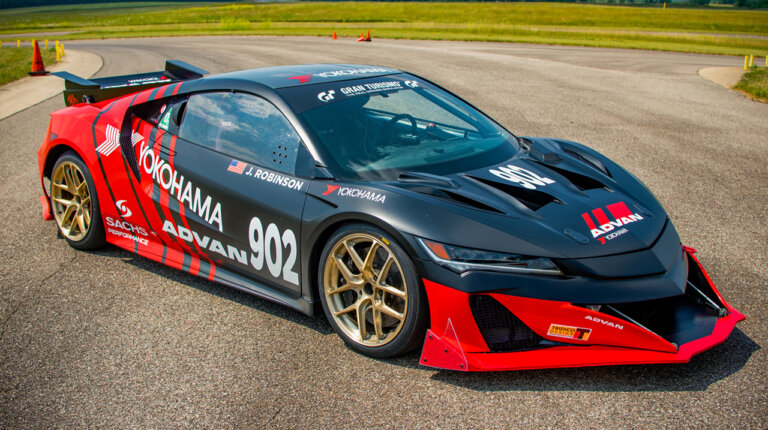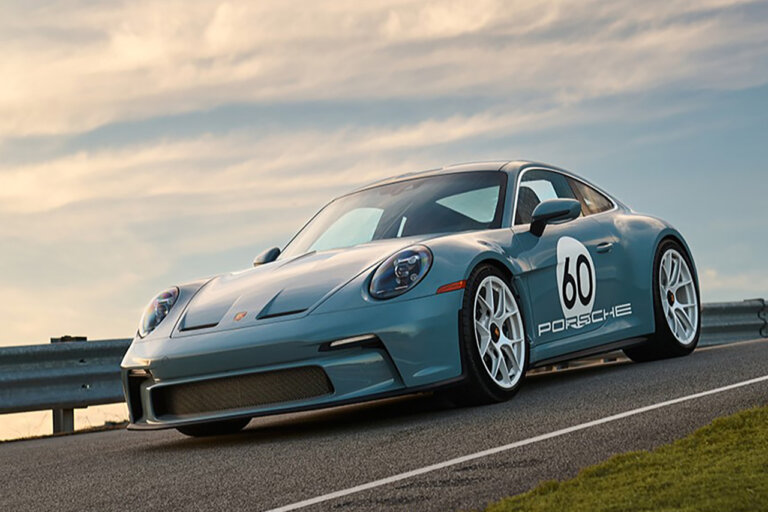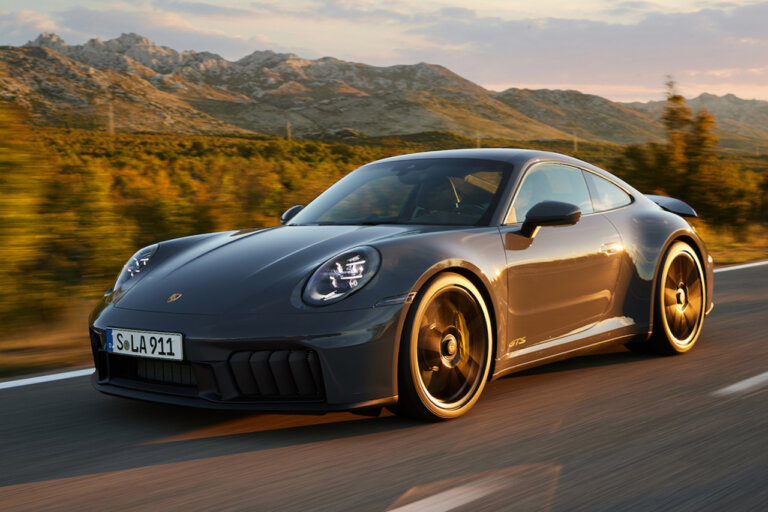Special Variants
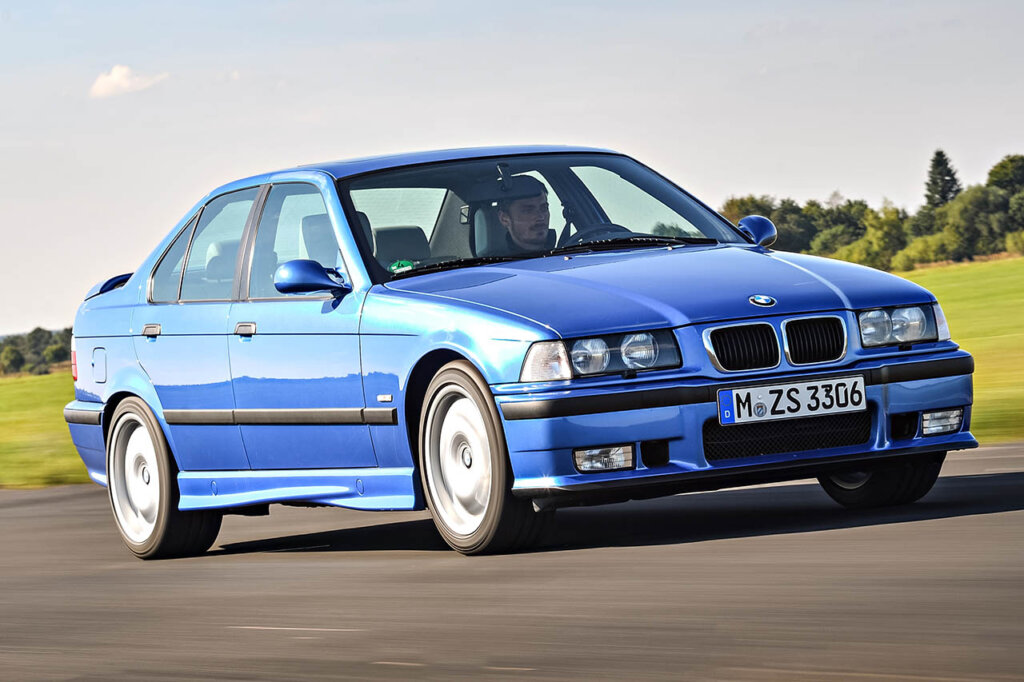
Source: BMW Pressclub Global
BMW later released special models and variants of the E36, such as the M3 GT and M3 GTR, each of them with their unique personality.
M3 GT (Europe)
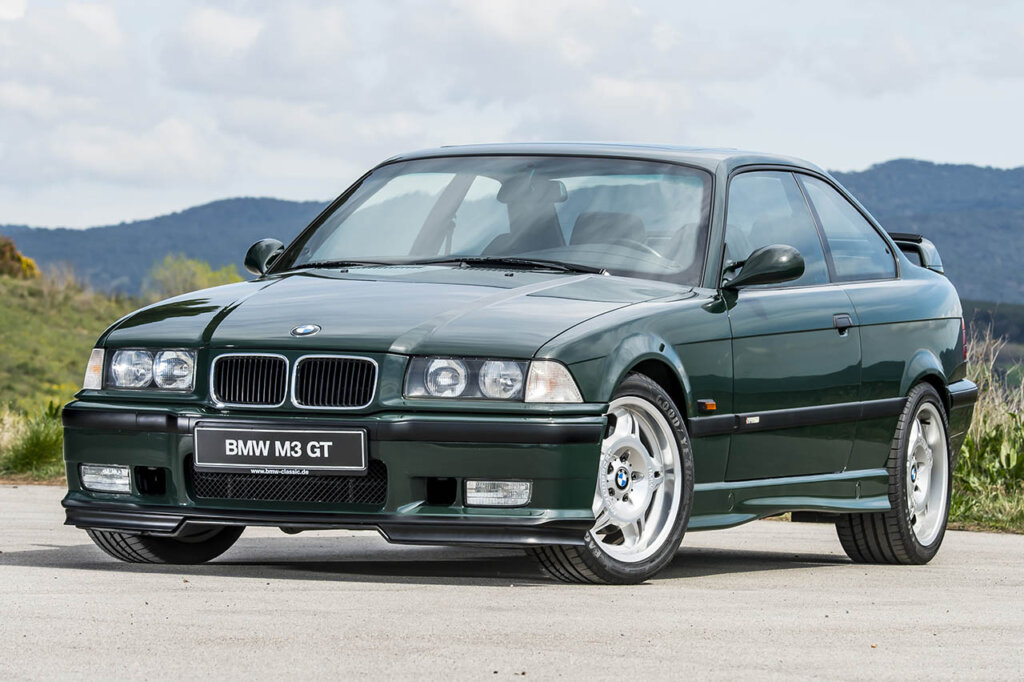
Introduced in 1994, the M3 GT was a limited-edition racing model specifically crafted for the European market. Comprising only 356 units, it was designed for competition in the FIA-GT class II, IMSA GT, and international long-distance races, with all units exclusively featuring left-hand drive for mainland Europe. The UK market received a unique GT trim, limited to 50 cars, distinguished primarily by cosmetic upgrades mirroring the homologation special.
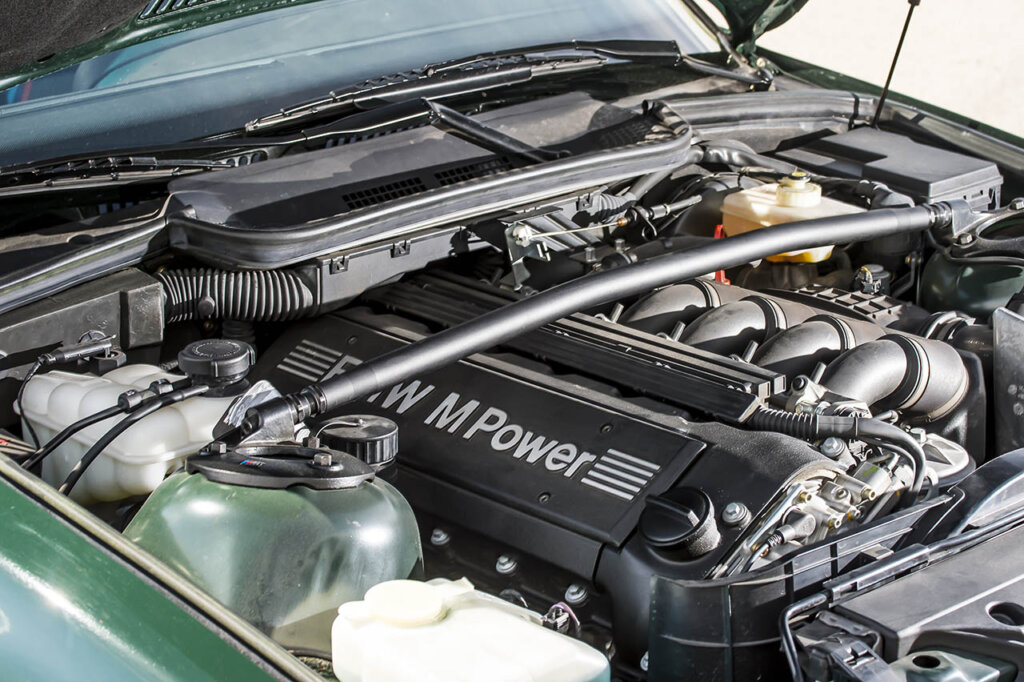
Under the hood, the M3 GT boasted the European-specification S50B30 engine, enhanced with larger camshafts and a heightened compression ratio, resulting in an impressive peak power output of 295 hp at 7,100 rpm. Adorned exclusively in the iconic “British Racing Green,” the M3 GT featured notable modifications such as a deeper and adjustable front splitter, an elevated rear double wing, aluminum doors, 17 x 7.5-inch front wheels, and 17 x 8.5-inch rear wheels. The front suspension was stiffened, complemented by the addition of a cross-brace and a strut brace. Overall, the M3 GT shed approximately 66 lb compared to its regular M3 counterpart, contributing to a derestricted top speed of 171 mph.
M3 Evolution Imola Individual
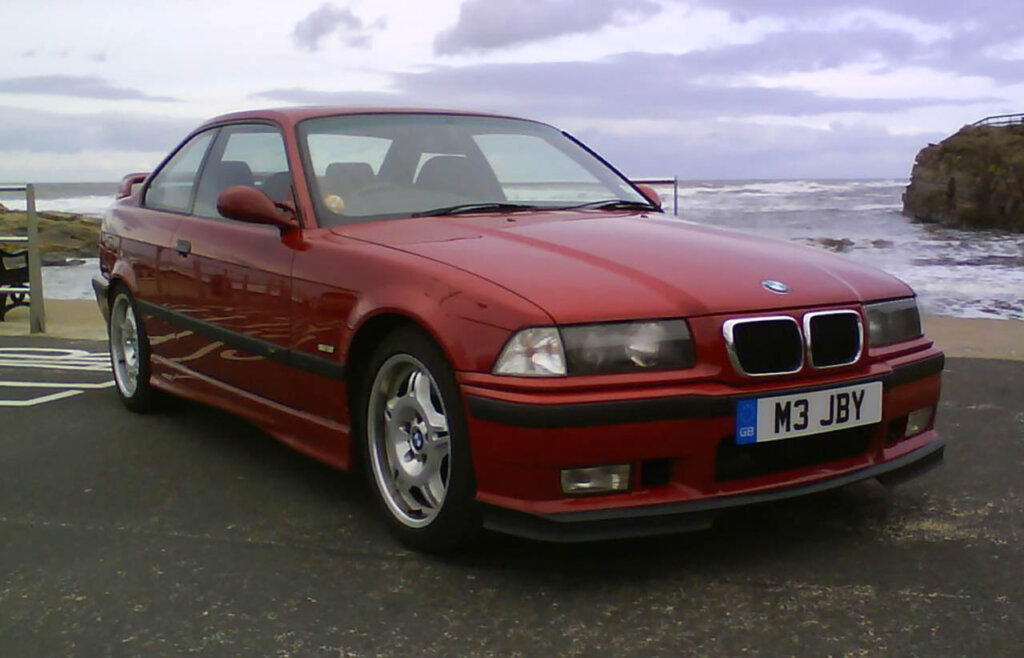
Source: Johnboy1973 via WikimediaCommons
The M3 Evolution Imola Individual was another 1994 limited edition of the M3, with only 50 units designated for the United Kingdom. Retaining the unchanged engine and performance attributes of the 1996 European M3, BMW UK curated a distinctive exterior and interior aesthetic for this exclusive variant. Adorned in “Imola Red ” paint, the car features Nappa leather seats in Imola Red and Amaretta suede bolsters in anthracite. Notable enhancements encompass side airbags, the M3 GT Class II rear spoiler, front Class II corner splitter extensions, electric seats, and double-spoke polished alloy wheels. Before the official launch of the Imola Individual, a pre-production model served as the blueprint for this special edition. This prototype showcased elements like the Class II front splitter, rear spoiler, special-order Imola Red paint, unique Nappa leather and Anthracite Amaretta suede interior, SMG gearbox, GSM phone kit, headlamp washers, and double-spoke polished alloy wheels.
M3 Lightweight (US Only)
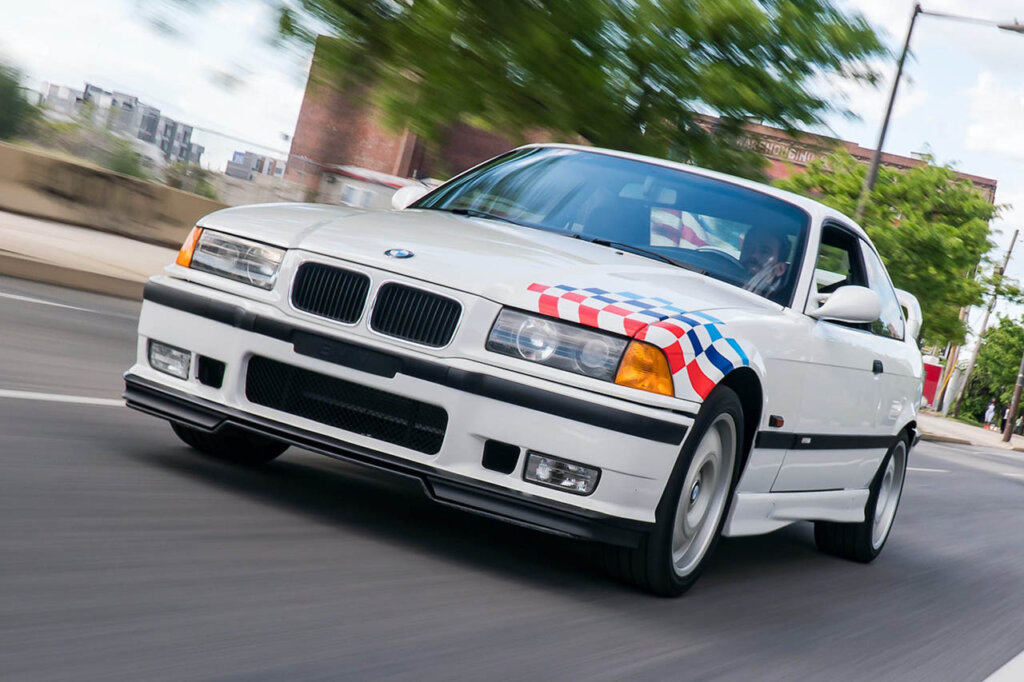
Source: LBI Limited
In the wake of the E36 M3’s introduction, racing teams in the United States pressured BMW for a U.S. version to partake in sports car racing. Responding to this demand, the ‘M3 Lightweight’ made its debut in 1995. These cars omitted features such as a radio (though speakers were installed, and the car was pre-wired for a radio), air conditioning, leather seats, tool kit, or a sunroof. The doors were built with aluminum skins, while under bonnet insulation was absent, and the boot only featured carpet on the floor. Thinner underbody insulation and special carpeting were employed to reduce weight, resulting in a remarkable 200 lb reduction compared to a regular M3.
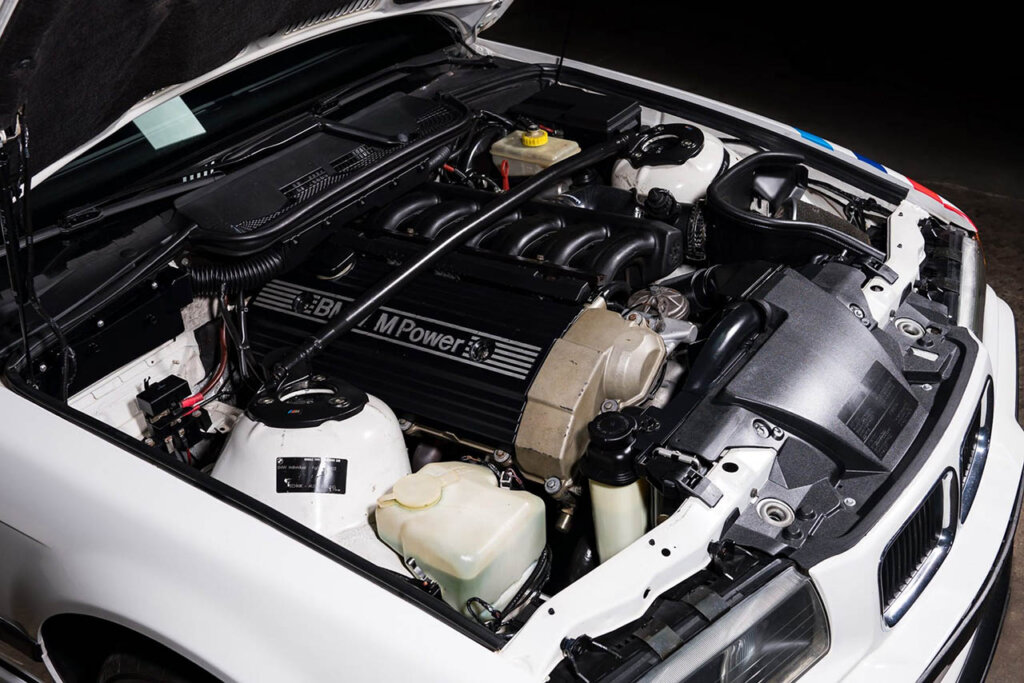
All M3 Lightweight cars sported an “Alpine White” exterior, adorned with Motorsports flag decals on the left front and right rear corners. A fixed wing on the bootlid, carbon fiber interior trim, and badges on the side molding and dash proudly declared “BMW Motorsport International.” Although BMW originally pledged to produce around 100 cars, the exact production numbers were never disclosed. However, estimates suggest that approximately 125 M3 Lightweights were built.
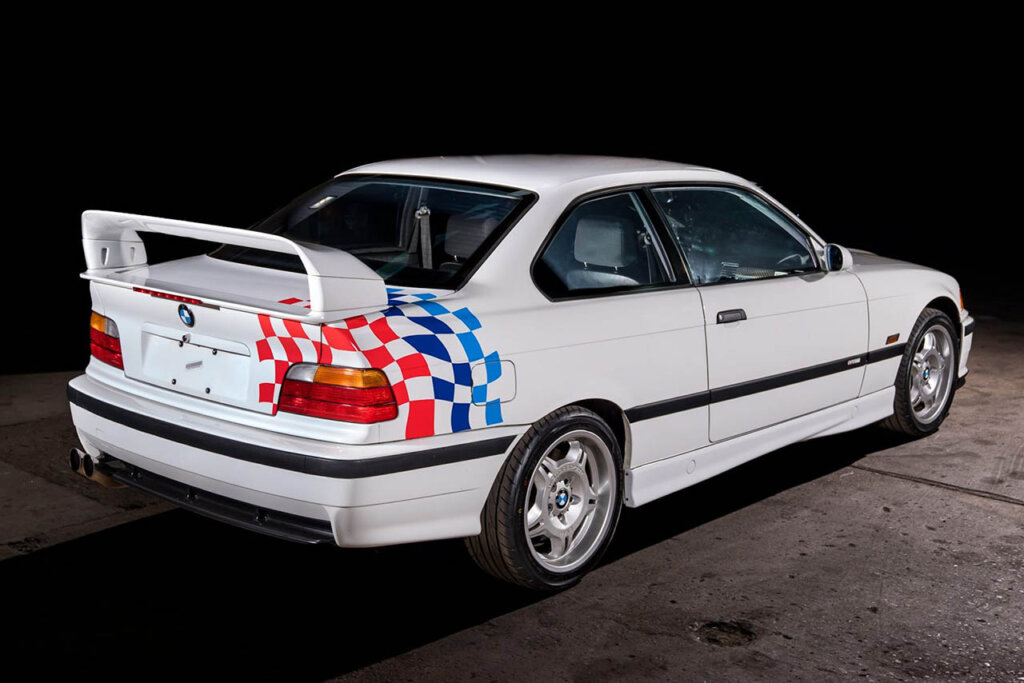
M3-R (Australia)
In preparation for the Australian Super Production series, BMW Australia made a limited run of fifteen M3-R models in 1994. Distinguished as the most powerful variant of the E36 M3, the M3-R boasted an impressive power output of 322 hp. Of these fifteen, four were allocated for competition in the race series, while the remaining eleven were offered to the general public. Prospective buyers were required to hold a CAMS motorsport license as a prerequisite for purchasing an M3-R. Upon acquisition, the cars were dispatched to the workshop of the Frank Gardner racing team for their final inspection. An optional factory-installed, bolt-in FIA-approved roll cage was made available. Suspension enhancements encompassed new springs, adjustable struts, and rear perches, while engine upgrades featured AC Schnitzer camshafts, a dual pickup sump, an oil restrictor in the head, and the replacement of the left-hand foglight with a cold air snorkel leading into the air filter box.
Further alterations included the adoption of four-piston front brake calipers, a shorter (3.25:1) differential ratio, the incorporation of the M5’s driveshaft, a twin-plate clutch, the removal of the rear seat, elimination of air conditioning, a deeper front splitter, and the addition of a larger rear spoiler. Each M3-R was individually numbered, with a plaque affixed to the center console near the handbrake.
M3 GTR (Germany)

Source: BMW Pressclub Global
The birth of the M3 GTR was BMW’s aspiration to participate in the 1993 ADAC German GT Cup Touring Car Series. Capitalizing on more lenient homologation requirements, BMW sought to enter heavily modified versions of production cars, provided they also produced a street-legal counterpart.
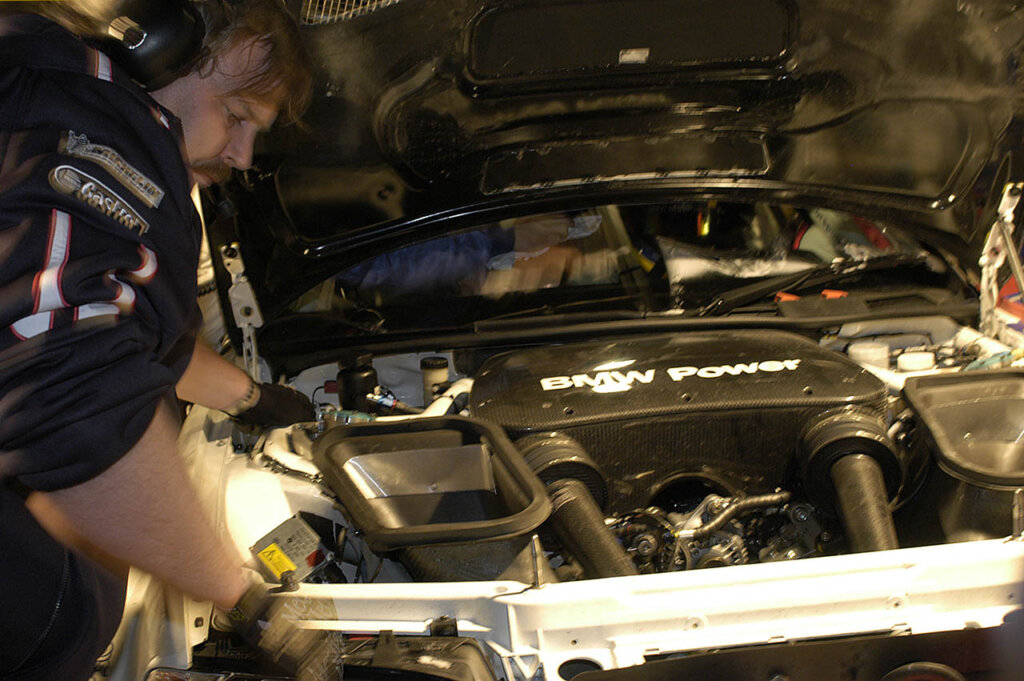
Source: BMW Pressclub Global
For heightened aerodynamic performance, the M3 GTR underwent a striking widebody transformation, featuring enlarged and more aggressive bumpers, substantial wheel arch extensions seamlessly linked by robust side skirts, and a sizable adjustable spoiler mounted on the elevated trunk lid—a reminiscent modification of the E30 M3’s historical adaptation. Notably, this distinctive widebody design never found its way into production M3 models or BMW M’s performance parts catalog. Nevertheless, global enthusiasts invested considerable time and resources in the subsequent years to recreate it, birthing some remarkably accurate GTR replicas.

Internally, the GTR Strassenversion sacrificed convenience features to align itself with its race-focused counterparts. This translated to the absence of carpeting, electric windows, a sound system, or a backseat. Beneath the hood, both the race cars and the Strassenversion concealed the same naturally-aspirated S50B30 DOHC 24-valve inline-six with VANOS variable valve timing found in the initial batch of EU-spec production M3s. Notably, the engine’s displacement was increased from 2,990 cc to 3,018 cc, coupled with other enhancements that elevated the power output from the stock 282 hp to approximately 350 hp. The engine was paired with a six-speed racing transmission, diverging from the 5-speed close-ratio unit originally featured in the mass-produced M3.

